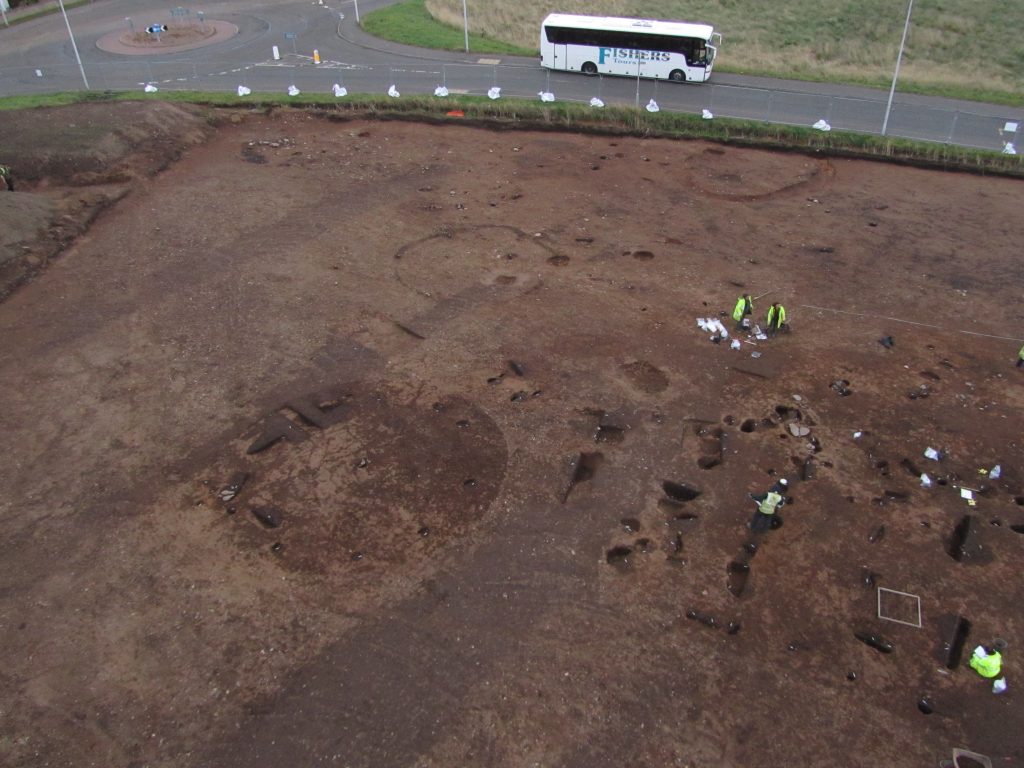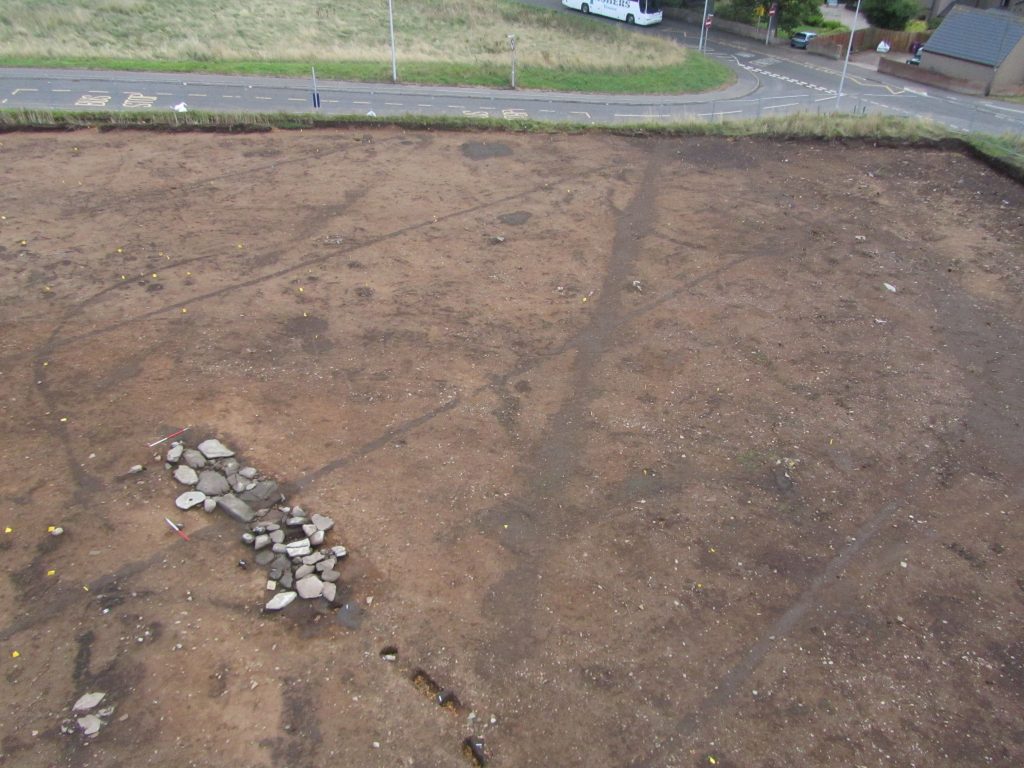A clutch of radiocarbon dates ranging between around 1200 BC to 900 BC, were recovered from the structures clustered to the north-east of the Neolithic hall. This is where the pit containing the Late Bronze Age hoard (dated to 1118-924 BC) was found. Which indicates that the hoard was buried in the middle of a large contemporary settlement. Five circular or sub-circular houses were revealed during the excavation, from which these radiocarbon dates were extracted, though as these were found right at the eastern limit of the excavation, this village undoubtedly extended beyond (underneath the road leading to Carnoustie High School). So we have a remarkable archaeological context for the hoard. Analyses of the artefacts and ecofacts from this settlement will provide information about the lifestyle of the people who buried the hoard.

But that’s not all!
Because the radiocarbon dates also revealed that the site was occupied sometime between around 700 to 1000 AD during the early medieval period. These dates came from features across the central eastern part of the site and while the only structure that we can just now confidently date to this period is a curious linear stone structure which yielded a radiocarbon date of 769-888 AD; this evidence clearly demonstrates that there was a Pictish settlement here too. Which was not expected!

